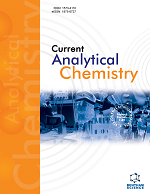
Full text loading...
Prefilled syringe is a multi-component injector drug packaging system in which liquid drugs are directly loaded for direct use by patients. It has two functions, drug storage and regular injection, which belongs to high-risk pharmaceutical packaging containers. In recent years, more and more injections have been packaged with prefilled syringes worldwide. However, no guidelines about compatibility of chemical injections and prefilled syringes was set up. In current review, studies related to the compatibility study was summarized. Structural composition, material composition and production technology are analyzed first. After that, extraction test, interaction study and safety study are summarized. Glass components, plastic components, seal elastomer components, other components and materials, adsorption test and physical properties are the main focusing points. Based on the studies mentioned above, together with the results of extraction test, migration test and adsorption test, safety evaluation indexes could be formed. The current review aims to provide strategies for the setting up of compatibility study guidelines.

Article metrics loading...

Full text loading...
References


Data & Media loading...

